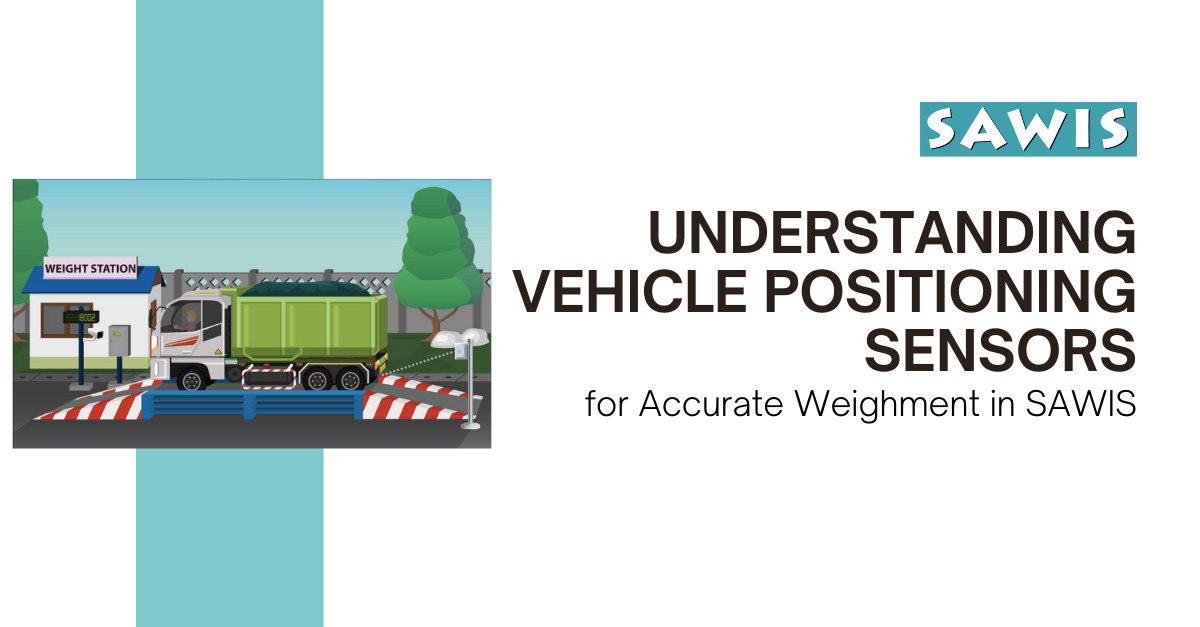
Understanding Vehicle Positioning Sensors for Accurate Weighment in SAWIS
What is a Sensor?
A sensor is a device that detects and responds to changes in the environment. It measures physical properties such as temperature, pressure, or motion, converting them into signals that can be read and analysed. Sensors are critical in various applications, from smartphones to industrial equipment, as they provide data that inform decisions and actions.
What is a Vehicle Positioning Sensor?
A vehicle positioning sensor is a specific type of sensor used in weighment systems to ensure that vehicles are correctly aligned on the weighment platform. This precision is vital for accurate weight measurement. These sensors detect the vehicle's position and provide feedback, ensuring that weighment occurs only when the vehicle is properly situated.
How Does a Vehicle Positioning Sensor Work?
Vehicle positioning sensors typically use technologies like infrared, ultrasonic, or laser systems. These sensors emit signals that bounce off the vehicle's surface. The sensor then calculates the distance or alignment based on the returned signal, determining whether the vehicle is correctly positioned.
For example, if a vehicle is too far forward or backward on the weighbridge, the sensor alerts the system, preventing the weighing process from proceeding until the vehicle is correctly positioned.
Importance of Accurate Weighment
Accurate weighment is crucial in industries like agriculture, logistics, and construction, where payments and billing are based on weight. Inaccurate measurements can lead to financial discrepancies, affecting both vendors and customers. For instance, in agriculture, the precise weight of sugarcane delivered is directly linked to payment calculations.
How Vehicle Positioning Sensors Ensure Accurate Weighment
- 1. Prevention of Misalignment: Sensors ensure that the vehicle is fully on the weighbridge, preventing partial weighment.
- 2. Avoidance of Fraud: By ensuring the vehicle is properly positioned, these sensors help prevent fraudulent practices, such as intentionally misaligning vehicles to alter weight readings.
- 3. Operational Efficiency: Properly positioned vehicles ensure quick and accurate weighment, reducing wait times and improving throughput.
Positioning of Sensors
Typically, vehicle positioning sensors are mounted at strategic locations on the weighbridge platform. They are positioned at the entrance and exit points, ensuring that vehicles align correctly as they approach the weighing area.
Here is a simplified illustration of sensor positioning:

Example: Sugarcane Weighment in Agriculture
Consider the example of a sugar mill where farmers deliver sugarcane. Accurate weighment ensures fair payment based on the actual quantity delivered. If a truck carrying sugarcane is not correctly positioned, the measured weight might be inaccurate, leading to financial losses for the farmer or the mill. Vehicle positioning sensors prevent such issues by ensuring that every load is weighed accurately.
Conclusion
In industries where transactions depend heavily on weight, the role of vehicle positioning sensors in weighment systems is indispensable. They not only enhance accuracy and efficiency but also safeguard against fraud. As technology evolves, these sensors will continue to play a crucial role in ensuring precise weighment, benefiting industries and stakeholders alike.
By integrating these sensors, SAWIS ensure that weighment is a reliable and integral part of the business process, fostering trust and operational excellence. By adopting technology like vehicle positioning sensors, industries can achieve precise weighment, which is critical for accurate billing and payments, enhancing trust and efficiency across operations.
